Every picture paints a story, and behind every picture is, often, an inspirational tale.
At least, this is true for these three Boston-area women. Each left a more traditional career behind to unapologetically follow a burgeoning passion for creating art.
Artist: Sallie Strand
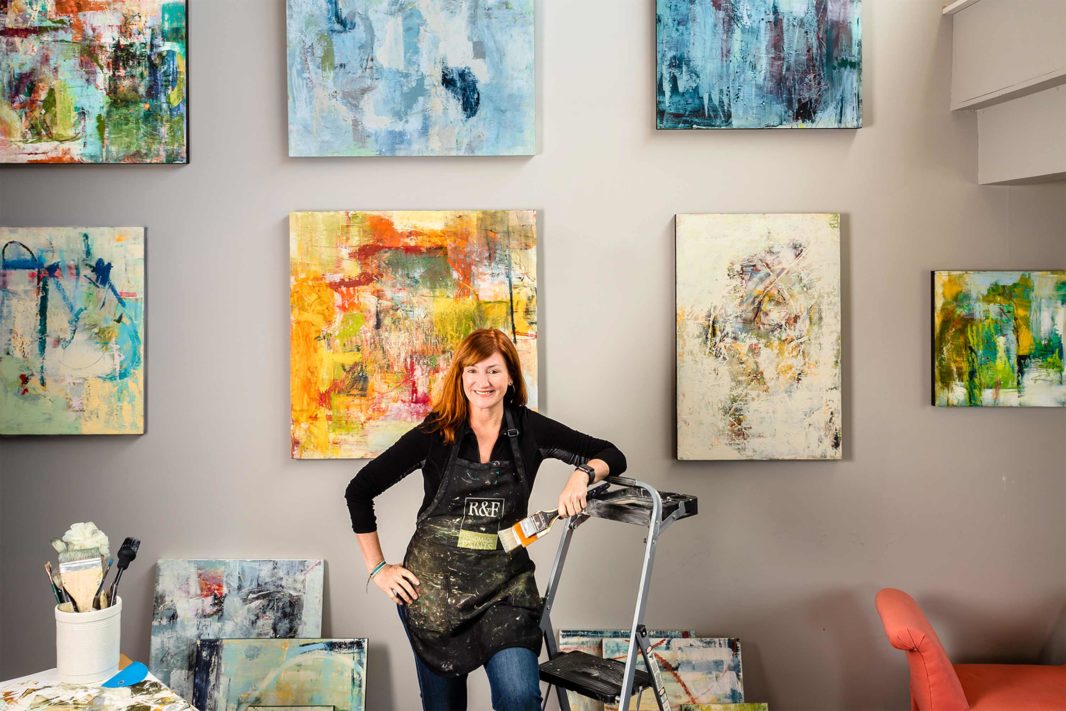
MICHAEL J. LEE
Artist Sallie Strand
Seated in her sunlit studio at the water’s edge in the Rocky Neck artist colony of Gloucester, Massachusetts, Sallie Strand says, “I’ve always loved art, but I can’t draw.”
We beg to differ. A curated selection of riveting canvases in bold draws my eye her studio walls. Strand clarifies, “Then, I took a class in abstract art and thought, I can do this!”
Strand, divorced since her three children were young, lives and works at her North Shore retreat during the summer. For the rest of the year, she’s at Lincoln Studios in Waltham.
Strand was gainfully employed as a pastry chef and, later, as a dietician. Then, six years ago, she inherited some money and could afford to leave her job.
“Being a dietician was not creative,” she reflects. “It was very rote. It wasn’t speaking to my soul.”
Emotion plays a huge part in Strand’s creative process. “Many layers of feeling goes into [a painting], just like in life,” she observes.
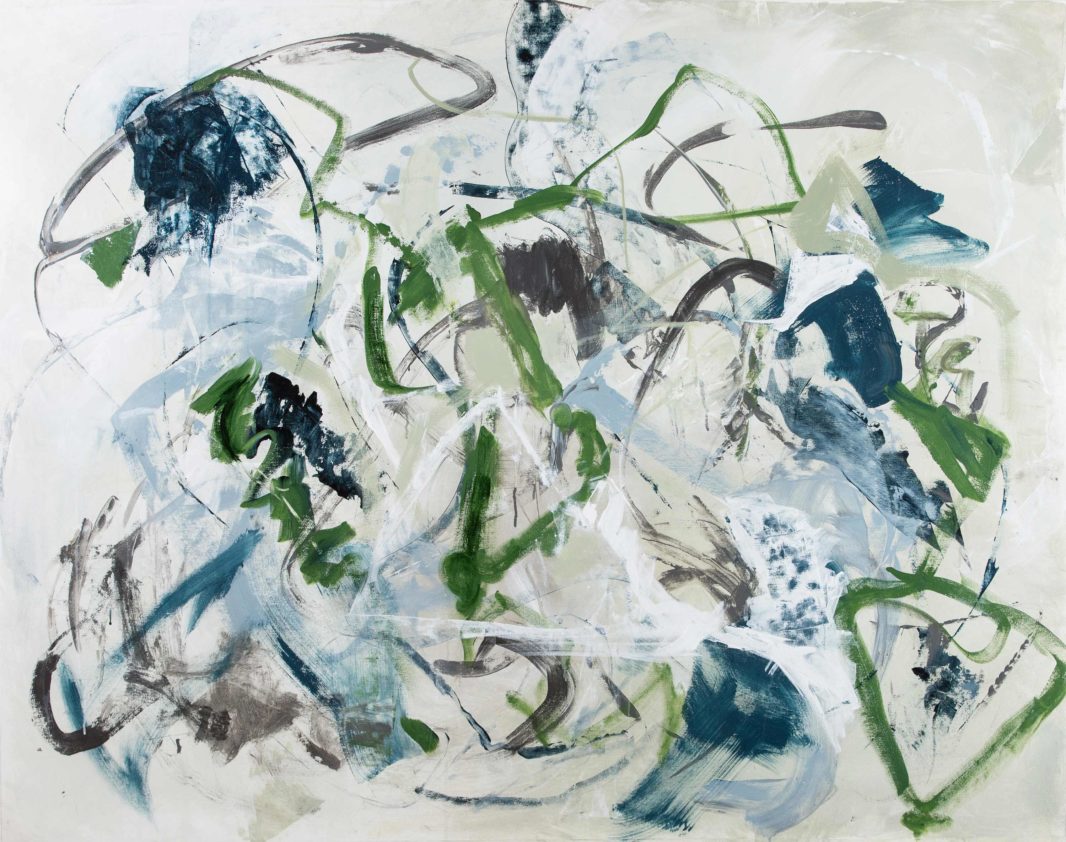
SALLIE STRAND
Sallie Strand’s painting “Geometric Dance”
She has titled three of her painting series “Connections,” “Mantra” and “Relationships.” The intangible moods that inspire her work — from energetic to contemplative — take shape as palpable applications of her preferred medium, oil stick. Rich and creamy, the oil stick pigment suspended in beeswax and linseed oil is “like butter,” she says, “so it feels a little like going back to my pastry roots.”
Some of the tools she uses — palette knives, silicon bowl scrapers and a pastry wheel — harken back to her culinary endeavors, and she explains that the gratification of painting is similar to what she got from baking.
“Someone is buying a piece of me that I’ve nurtured and sent out into the world. It’s like a cake I might bake for someone, but it’s a lot less fattening.”
Strand has been in dozens of solo and group shows and received a commendation from Boston Mayor Marty Walsh. This year has started off well for her. Her work is in the Mystic Museum of Art, and several other prestigious shows have accepted it.
“People finding me before I was really established as an artist was a huge sign that I was doing the right thing,” says Strand. “The first couple of years that I displayed my work, I recall how vulnerable it felt and how gratifying it was to hear any sort of praise. When you put yourself out there as an artist, there are many avenues of rejection. If there isn’t some balance of positive feedback, it can be hugely discouraging. I think the combination of hard work and luck paired with a positive attitude has given me the courage to persevere.”
Artist: Julia S. Powell
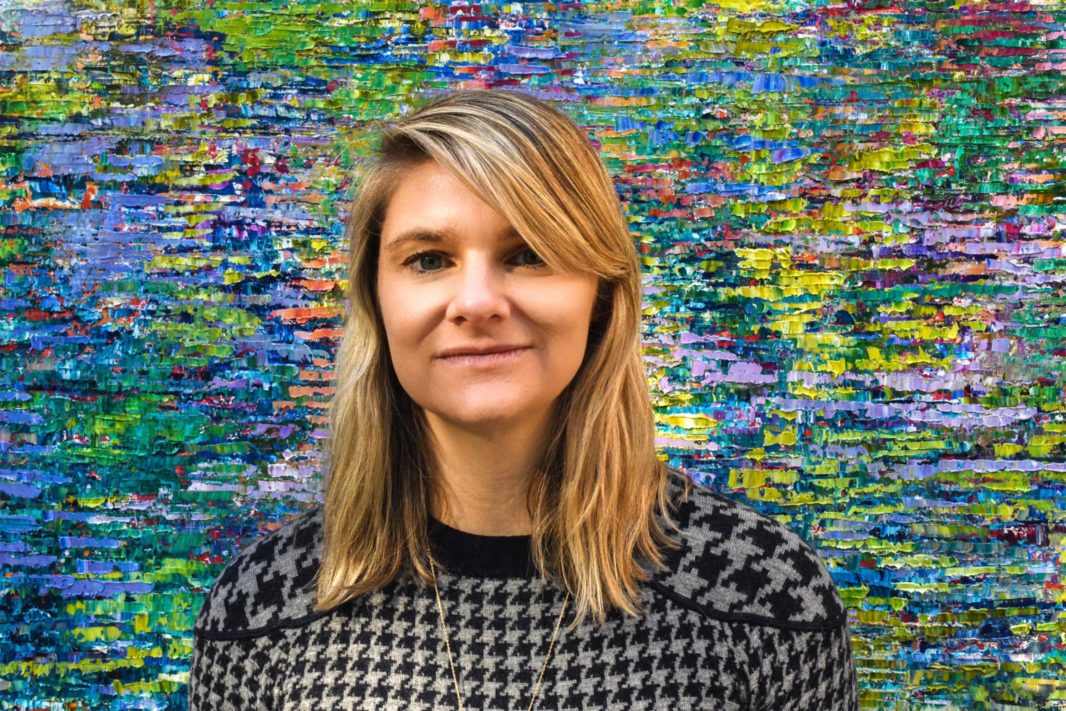
COURTESY JULIA S. POWELL
Artist Julia S. Powell
Julia S. Powell weaned herself gradually from her day job as an attorney before giving her art exclusivity almost two years ago, once her student loans were paid up. By that time, the Cambridge-based Yale graduate with a Stanford law degree realized she could support herself as an artist.
But, for Powell, there was more. “Giving people joy when they were dealing with problems in their lives gave me a sense of purpose and a sense of happiness that I didn’t have when I was practicing law,” she says.
“I chose law not because of any serious passion, but because of its practicality,” Powell explains. She adds that in college and in high school — where actress Mindy Kaling was a close friend — she was a pretty serious athlete and student. Art, in particular watercolor, was something she did for fun when she had time.
All that changed five years ago when Powell’s brother gave her an easel and oil paints along with his unwavering endorsement. “You’re really talented with watercolor,” he said to her. “You should experiment with oil and see if you can do anything.”
Indeed, Powell has, and she says with pride, “I’m entirely self-supporting as an artist. I am financially more successful than I ever was as an attorney.”
Strand is quick to point out that dedicating time to marketing herself has been essential to becoming a self-sustaining artist.
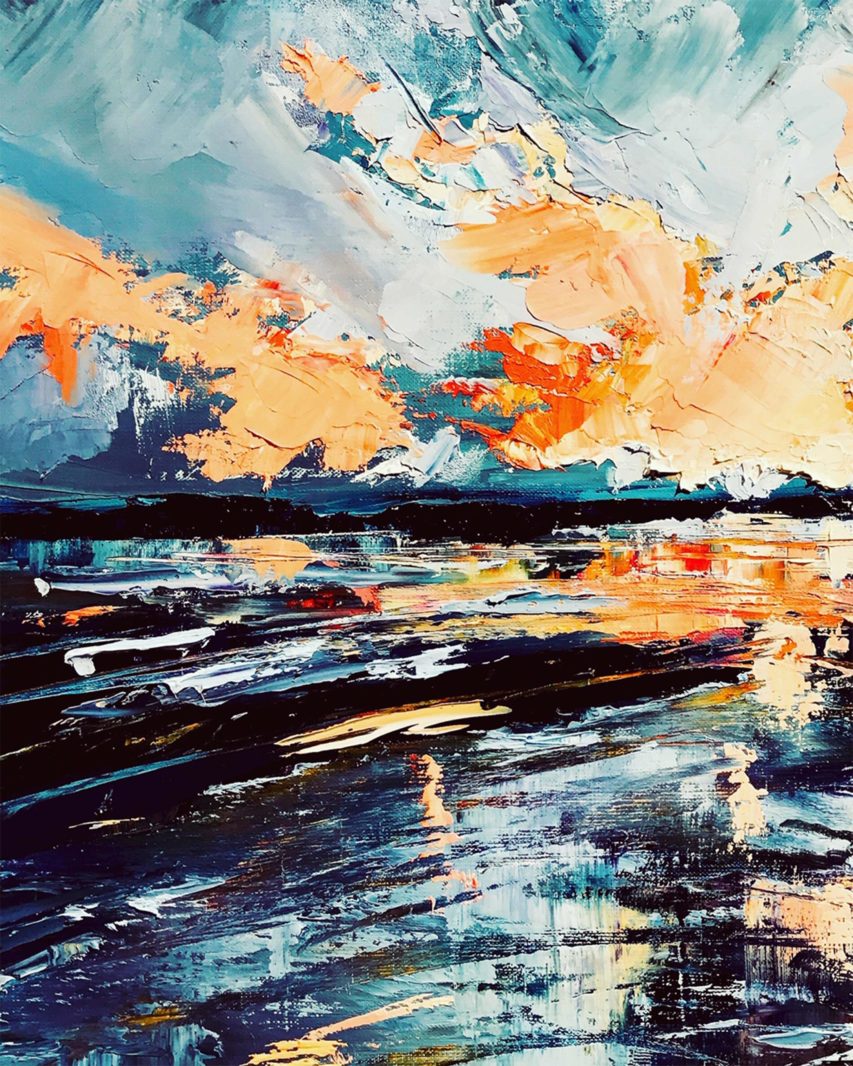
COURTESY JULIA S. POWELL
Julia Powell’s “Acadia on My Mind Series” oil on linen
Powell agrees. In addition to painting, Powell says that when she was getting started she would spend three hours a day on Instagram. She’d be liking, commenting, interacting with other art accounts, interior designers, art critics — all to try to cultivate her own following and get her work out there. She now has more than 90,000 followers.
Powell’s home studio bursts at the seams with canvases. She does quite a few commissioned paintings and ships her work regularly to places as far-flung as Hong Kong and New Zealand.
Powell is largely self-taught (YouTube, books, experimentation). She says her style has evolved from three Bs — birches, boats and barns — to more abstract images.
“I was always drawn to the Impressionists, like many people, but I wanted to do something contemporary.”
Her technique involves methodically layering oil paint using a brush or a palette knife, waiting for it to dry, then adding more layers to achieve the color schemes and textures that make her art unique. Despite being a self-proclaimed extrovert, Powell appreciates the meditative nature of the process.
“I like to think of my art as a refuge,” she says. “There’s so much happening in the world that makes us angry and sad and divisive. Right now, the world is a dark environment, and I don’t see a need to capture that. I see a need to create a beautiful, calm refuge from it.”
Artist: Winifred Breines
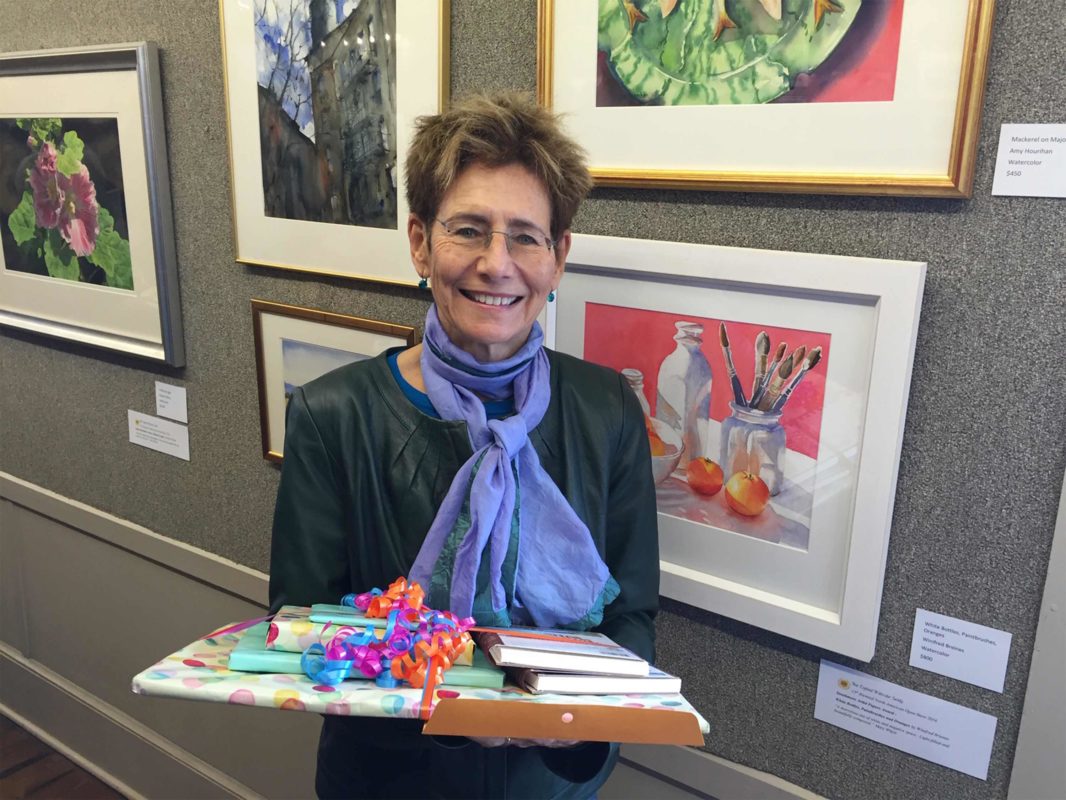
COURTESY WINIFRED BREINES
Artist Winifred Breines
Winifred ‘Wini’ Breines’ Brookline home fittingly features bittersweet-hued tiger lilies cozied up to a deep-purple picket fence.
She likes to paint things that make her happy, and the hundreds of watercolors she has painted over the last 11 years almost exclusively depict vibrant colored fruit, such as oranges and tomatoes. They are often arranged in bowls with the sunlight hitting them at just the right angle.
“I sometimes feel that as a representational still life painter I’m an old fogey,” she says. “But I believe there’s some humanity and peacefulness in my work that is comforting. Given the disturbing times in which we live, I see these paintings as a small, but significant, alternative. They are a way of experiencing and viewing the possible good in the world.”
Breines is a professor emerita of sociology and women’s studies at Northeastern University. She was a New Left activist in the 1960s and 1970s. She also has a master’s in urban planning.
But, today, she is in a phase of her life marked by “creating a new way of seeing beauty in mundane, taken-for-granted objects.”
Breines doesn’t recall ever thinking that she’d become an artist after teaching. Still, today, she cannot fully explain it.
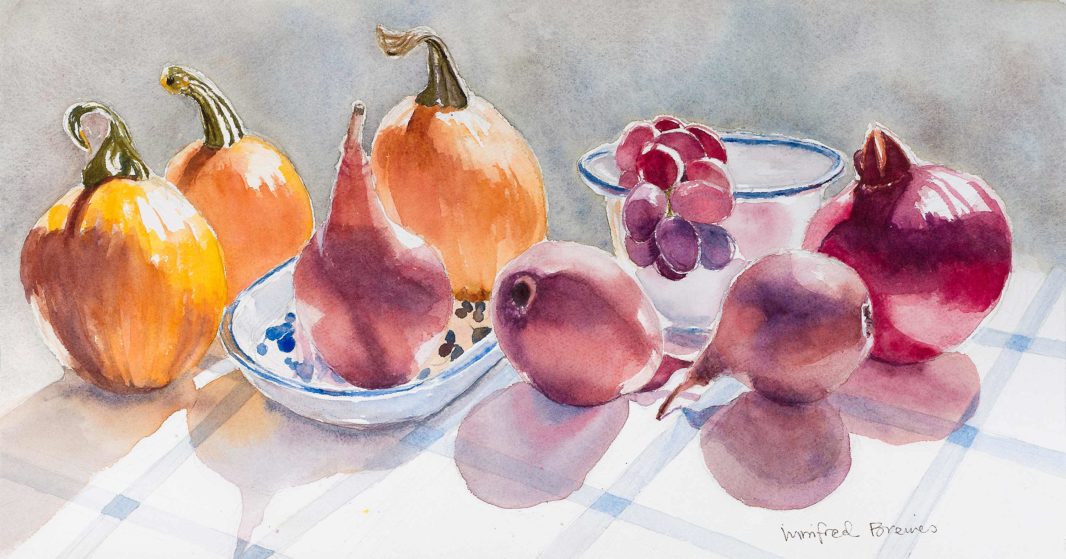
WINIFRED BREINES
Winifred Breines’ painting “Pumpkins, Pears, Pomegranates, Grapes”
“To my astonishment, as soon as I retired, I began to paint still life watercolors,” she says. “I have always been artistic, but was not encouraged to consider art as a serious undertaking.”
Within four months of wrapping up her academic career, Breines was poring over art books, watching instructional CDs, and enrolling in her first workshops, including one taught by celebrated American watercolorist Charles Reid.
Today, Breines is a signature member of the New England Watercolor Society. She typically participates in about five shows each year. She entering shows located in places she wants to travel, like New Orleans and Santa Barbara.
It’s not a stretch to say that painting is like breathing for her. It is something she tries to do every day and misses if she can’t. Such is the extent of her passion.
“My most significant artistic accomplishment to date is becoming an artist,” says the onetime college professor. “I have become accomplished to the point that I am proud of my paintings. I want others to appreciate them, and I want to sell them.”



 7 min read
7 min read
